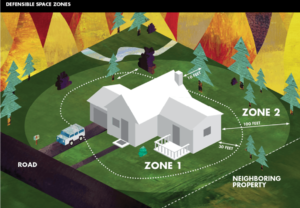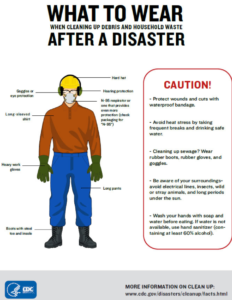SAN FRANCISCO—Planning for wildfires during fire season, could help save one’s home and prevent injury to loved ones. To prepare for a wildfire the grass should be cut to four inches or below, remove any dry leaves or grass, have the trees trimmed, and have no branches hanging over the roof recommends California Department of Forestry and Fire Protection. Space out anything that could catch fire on the lawn such as furniture, trees, playsets, and have a cleared, defensible space extending one hundred feet from your home.

Find all the ways to evacuate the area and various evacuation routes beforehand to familiarize. Practice the evacuation plan with family and pets. One’s car should be full with gas and remove any obstructions from the escape route. Locate the nearest shelters and visit FEMA or Red Cross to help you find them if none have been made known.
Include respirators, which filter out smoke or ash, in the emergency kits along with any medications needed, water, food, and flashlights for a power outage. The Centers for Disease Control and Prevention recommends choosing a room to close off from the outside air and setting up a portable air filter in it to keep the air in the room cleaner when the rest of the house or outside may be smoky. People can use AirNow or have a battery-powered radio on hand in case internet access fails to keep track of fires nearby.
If a wildfire transpires, get everyone to the designated room closed off from outside air and put on your respirators. High-efficiency filters for those who have a central air conditioning system can help capture some of the fine particles from smoke. The air system should be set to recirculate if you have fresh air intake. If the power goes out, water purification systems may not function fully, so only drink prepared or bottled water. In the case of evacuation, grab the emergency kit, follow the escape plan, and get to the chosen shelter.
Wait to return home until fire officials say it is safe and keep checking air quality reports. Once the go-ahead is given, drive back safely by paying attention to any missing traffic lights and debris on the road. Return during daylight to make it easier to see and avoid hazards, if the electricity is off upon returning home. Before entering

Inside the home, look for any structural damage, and if none one can go in. Leave pets or kids outside until cleanup is finished. Listen for shifting or unusual sounds as they can signify that the house may collapse, leave immediately if one hears hear any. If gas is smelled, don’t touch anything since that may ignite a spark, and get out.
For cleaning up, wear long-sleeve shirts, long pants, an N95 mask, steel toe boots, work gloves, goggles, a hard hat, and have two or more fire extinguishers on hand. Try to have another person help and do not make the workday too long and pace yourself. These tips should assist with dealing with wildfires more efficiently and safely.







